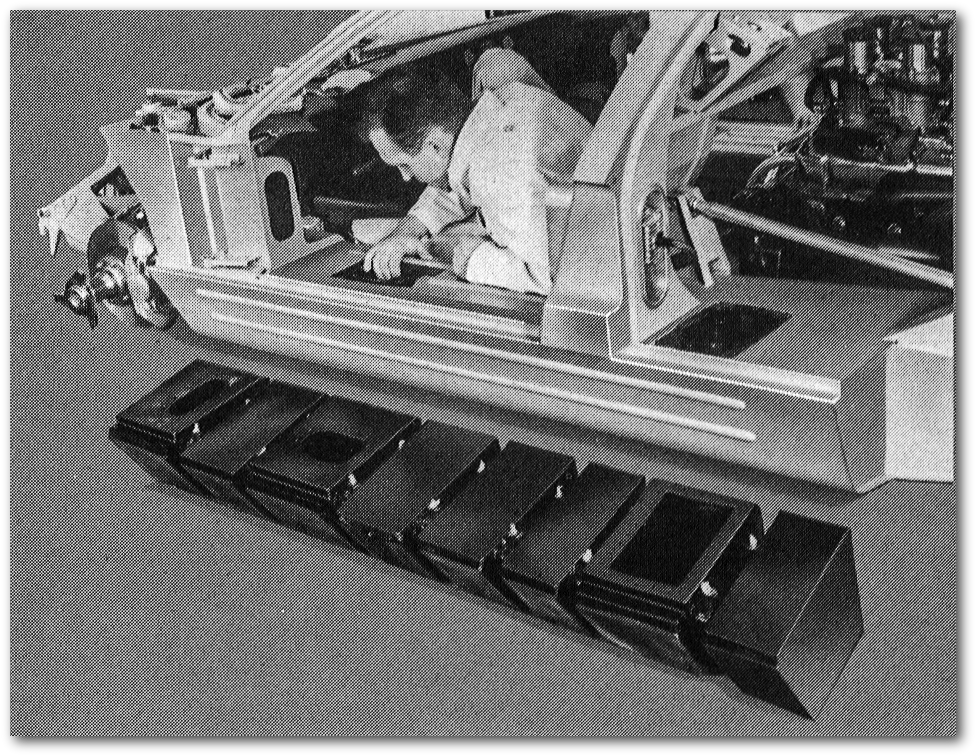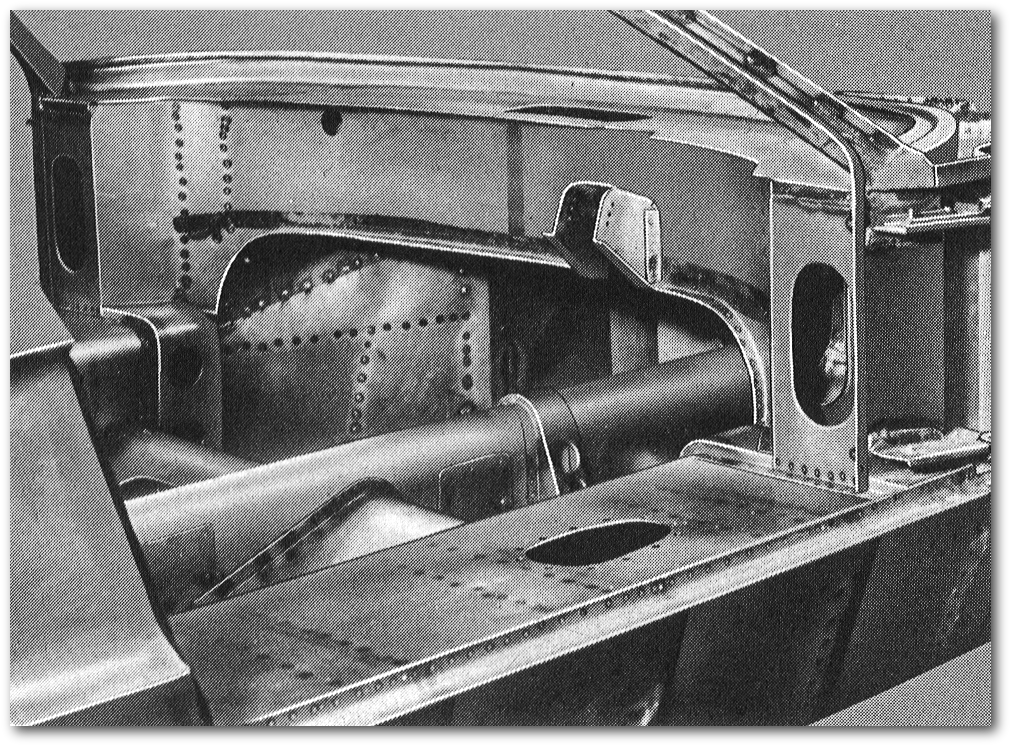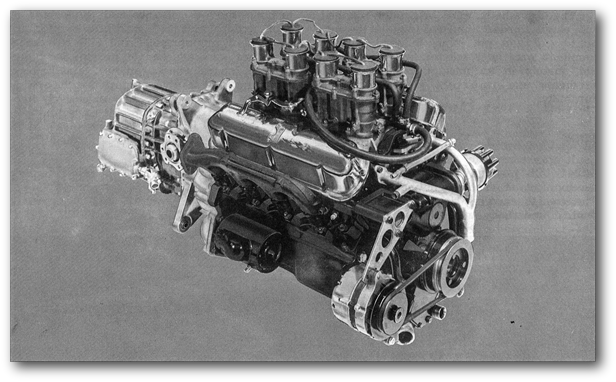
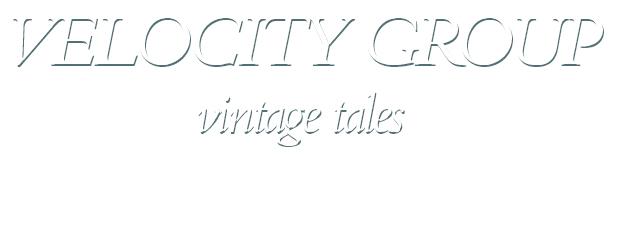
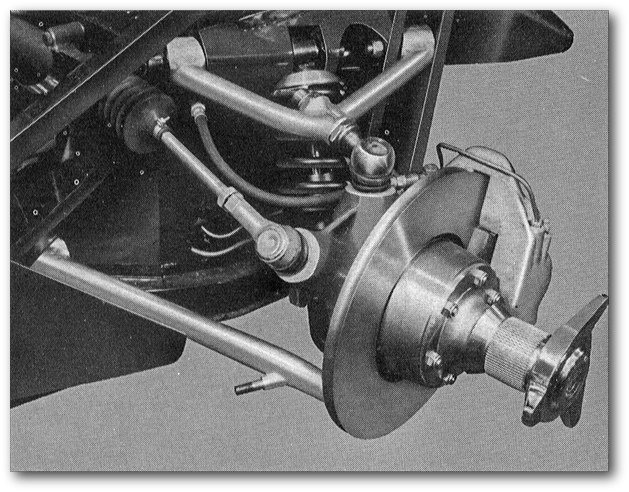

“Yes, and you mention the testing we did at Goodwood and Snetterton, that was all done with the original Lola prototype, but with the Ford running gear.”
”So that was done with the Lola prototype?”
“The original testing was done with the Lola prototype. That’s why we wanted it. So we could test things very quickly. Testing hardware, engines, transmissions, suspensions, so on.
“Now the first real Ford GT, which was emerging, in that first year, between sixty three and sixty four, that came out, I can’t remember the exact date, about April. And we had a hell of a problem because the PR people wanted it in New York and we wanted to have it on the test track for development. The PR people won, so we had to fly it to New York. Show it, then fly it back again.
“The worst thing was that for New York you had to have it all painted and polished for show purposes. So unfortunately we wasted a lot of time.
“And we got it to the test in Lemans and at that time it hardly turned a wheel on the track. So we were really doing our experimental development driving in public. As you know we had problems…it did make the race, but it was still an undeveloped car.
“So that was really, that first year from, April when we put pencil to paper, to June the following year, that the time scale, of having the car running.
“Now, I always said, ‘We'll have the car running in a year’.
“And of course the PR department said, ‘Well, why don’t you have them running and winning in a year!’ Which was ridiculous to me.”
(Laughter)
“The meeting by the way, where this all got approved by Iacocca, and was attended by Don Frey, was an interesting meeting.
“We presented the program, how we were going to look for a partner in England. Try and get his assistance for the first year, and so on. And the whole thing took five to ten minutes. And everybody approved it. This was Iacocca’s executive committee.
“Then they went on to the results once we won. And that lasted about fifty minutes!
“So the amusing thing to me was I was given my little bag of gold to go off and do it. But the actual time was spent deciding what do you do promoting the results when you win.”
“Anyway,” he continued through an audible smile, “That was fine.
“Well, you know after that, we were dealing with a period where we were trying to continue development in-between racing, and so on. And of course now we were dealing with the Ford GT, not the Lola GT. And it was hard work. Had the press breathing down out necks all the time. While we’re trying to do things quietly. Correct our mistakes. It wasn’t easy."
In telling this story we can assign the actual dates to actions taken by those involved. Through the benefit of hindsight we can describe them as if we were there. We can say how in August Broadley signed the agreement and Lunn and his team moved Lola into a new facility at Slough. And, in that same month Phil Remington arrived from Shelby’s California facility to fit the Indy V8 engines. And that by the following month Bruce McLaren was testing all the new Ford designed bits and pieces on the Lola GT prototype at Goodwood and Snetterton. When the weather changed testing moved to Monza.
At the time though, we, the enthusiast public, knew very little of this. Yes, the Total performance program was unfolding in a hundred ways it seemed. But all that was really known about the Ford GT were rumors in Road & Track, Car and Driver, and Sports Car Graphic. The first real mention of the cars were in newspaper articles covering the New York Auto Show in April of ’64, where Ford had flown them in for a little promotion. In the June automotive monthlies, the first detailed pictures appeared of the New York show cars. These issues also had the results of Sebring, which was succinctly summed up in Sports Car Graphic with the headline: Three Ferraris won but three Ford Cobra coupes really won! On pages 84 through 86 was a full spread of photos and tech copy on the New York Show Ford GT supplied by Ford Public Relations. The same magazine also showed the first ad for the new Mustang. Total Performance was now white hot. And while Ferrari may have won at Sebring, it was now seen that the flood of Ford money would soon be an irresistible force for all the competition. Or would it?
While Ford may have been the first multi-national corporation, manufacturing cars in England, Germany, France and Italy on an incomprehensible scale, its much ballyhooed international racing effort was still six guys from Dearborn and as many Brits working in a small shop outside London, on a budget that was but a fraction of what Ford spent on magazine ads. Hell, accounting saw it as part of the ad budget. And promotion was about to collide with, well, the very real world of racing in the sixties.
Anxiously, even those rooting for Ferrari in this match of the titans, watched the mail for the July ’64 issues of the magazines, they would have the results of the April LeMans trials. These were the pre-race tests that, after being held unofficially for years, became official in 1961, as much at the instigation of the hoteliers and restaurants in the town of Le Mans, as the manufacturers wishing to test their latest hardware on site. As is so often the case, the weather was lousy, and so was the news for Ford fans.







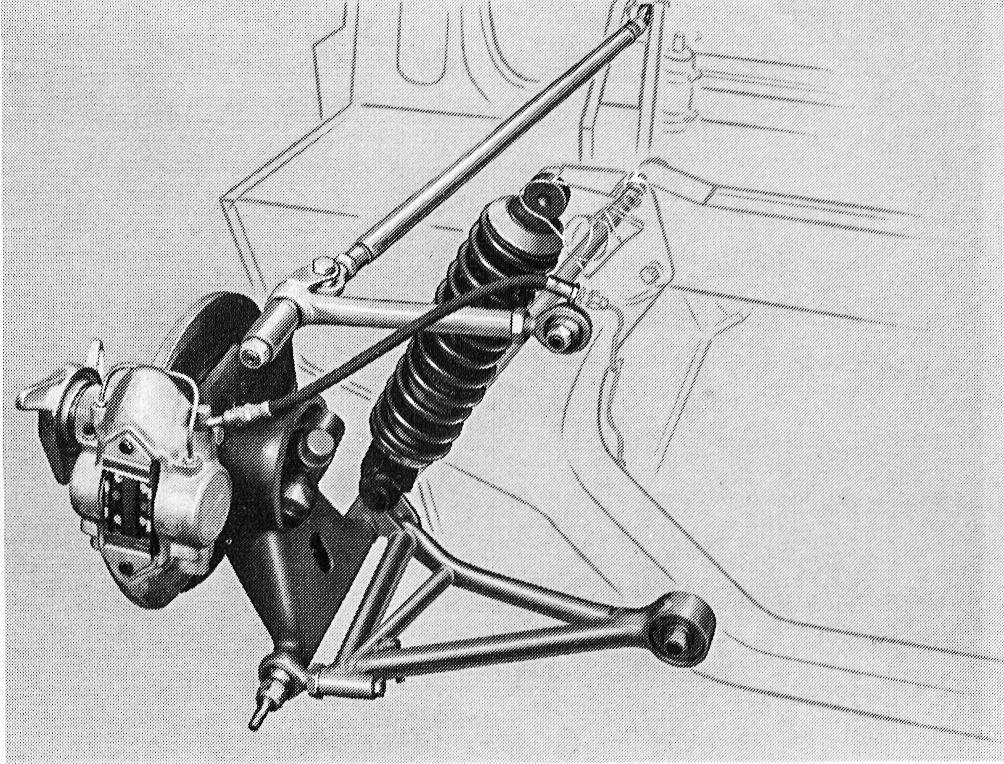
Period Grand Prix front suspension
GP Rear suspension
Original assembled engine with trans.
Notice headers here.
Chassis and fuel cell construction.
Steel monocoque showing hand fabrication rivet detail.








